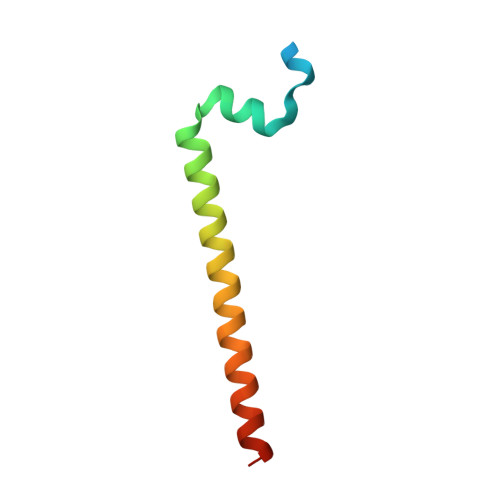Structural basis for binding specificity between subclasses of modular polyketide synthase docking domains.
Buchholz, T.J., Geders, T.W., Bartley, F.E., Reynolds, K.A., Smith, J.L., Sherman, D.H.(2009) ACS Chem Biol 4: 41-52
- PubMed: 19146481
- DOI: https://doi.org/10.1021/cb8002607
- Primary Citation of Related Structures:
3F5H - PubMed Abstract:
Bacterial type I polyketide synthases (PKSs) assemble structurally diverse natural products of significant clinical value from simple metabolic building blocks. The synthesis of these compounds occurs in a processive fashion along a large multiprotein complex. Transfer of the acyl intermediate across interpolypeptide junctions is mediated, at least in large part, by N- and C-terminal docking domains. We report here a comprehensive analysis of the binding affinity and selectivity for the complete set of discrete docking domain pairs in the pikromycin and erythromycin PKS systems. Despite disconnection from their parent module, each cognate pair of docking domains retained exquisite binding selectivity. Further insights were obtained by X-ray crystallographic analysis of the PikAIII/PikAIV docking domain interface. This new information revealed a series of key interacting residues that enabled development of a structural model for the recently proposed H2-T2 class of polypeptides involved in PKS intermodular molecular recognition.
- Life Sciences Institute, Department of Medicinal Chemistry, University of Michigan, Ann Arbor, Michigan 48109, USA.
Organizational Affiliation:

















